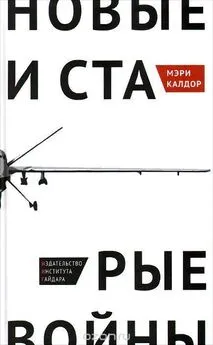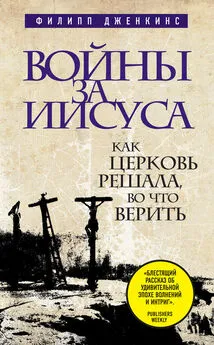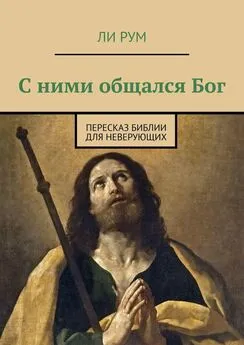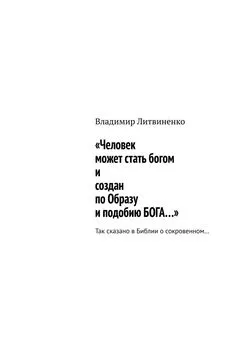Филипп Дженкинс - Войны за Бога. Насилие в Библии
- Название:Войны за Бога. Насилие в Библии
- Автор:
- Жанр:
- Издательство:неизвестно
- Год:неизвестен
- ISBN:нет данных
- Рейтинг:
- Избранное:Добавить в избранное
-
Отзывы:
-
Ваша оценка:
Филипп Дженкинс - Войны за Бога. Насилие в Библии краткое содержание
Перевод: Михаил Завалов
Войны за Бога. Насилие в Библии - читать онлайн бесплатно полную версию (весь текст целиком)
Интервал:
Закладка:
{101} Halpern, From Gods to God, 57–131; Weinfeld, Deuteronomy 1–11, находит параллели между Второзаконием и языком тогдашних ассирийских царей.
{102} Jack Miles, God: A Biography (New York: Alfred A Knopf, 1995), 117–18, 154–59.
{103} Цитата из Втор 7:23; о шершнях см. Исх 23:27–29; Втор 7:19–23; Ис Нав 24:12. Norman C. Habel, The Land Is Mine (Minneapolis: Fortress Press, 1995); Weinfeld, The Promise of the Land, 85–87.
{104} Быт 15:16.
{105} Втор 9:4.
{106} Лев 18:24–25. Brueggemann, Divine Presence amid Violence.
{107} Втор 32: «Очистит землю…» — ст. 43; «ужас» — ст. 25.
{108} Thomas R. Neufeld, Put on the Armour of God (Sheffield, England: Sheffield Academic Press, 1997); Мих 4:13.
{109} Moshe Weinfeld, The Promise of the Land, 91; Megan Bishop Moore, «Fighting in Writing», in Brad E. Kelle and Frank Ritchel Ames, eds., Writing and Reading War (Leiden, Netherlands: Brill, 2008), 57–66; Michael G. Hasel, «Assyrian Military Practices and Deuteronomy’s Laws of Warfare», in Kelle and Ritchel Ames, eds., Writing and Reading War, 67–81.
{110} Втор 13: 6–16.
{111} 4 Цар 23:5, 12, 20, 25.
{112} Dennis T. Olson, Numbers (Louisville, KY: John Knox Press, 1996), 152–56; Baruch A. Levine, Numbers 21–36 (New York: Doubleday, 2000), 277–303.
{113} Об Ездре и Неемии см. Charles Fensham, The Books of Ezra and Nehemiah (Grand Rapids, MI: Eerdmans, 1983); H. G. M. Williamson, Ezra-Nehemiah, vol. 16 in Word Biblical Commentary (Nashville, TN: Thomas Nelson, 1985); Matthew Levering, Ezra and Nehemiah (Brazos Press, 2007); Mark J. Boda and Paul L. Redditt, Unity and Disunity in Ezra-Nehemiah (Sheffield, England: Sheffield Phoenix Press, 2008); Joseph Blenkinsopp, Judaism, The First Phase (Grand Rapids, MI: Eerdmans, 2009).
{114} Ездр 9:1–2.
{115} Неем 13:30 (NRSV). Rainer Albertz and Bob Becking, eds., Yahwism After the Exile (Assen, Netherlands: Royal Van Gorcum, 2003); Gary N. Knoppers, Lester L. Grabbe, and Deirdre N. Fulton, eds., Exile and Restoration Revisited (London: T&T Clark, 2009).
3
{116} В данной главе я пользовался энциклопедией Jane Dammen McAuliffe, ed., Encyclopaedia of the Qur’an, 5 vols. (Leiden, Netherlands: Brill, 2001–2005); Jane Dammen McAuliffe, ed., The Cambridge Companion to the Qur’an (New York: Cambridge Univ. Press, 2006); Andrew Rippin, ed., The Blackwell Companion to the Qur’an (Malden, MA: Blackwell, 2006). См. также Brian A. Brown, Noah’s Other Son (New York: Continuum, 2007). Относительно традиции комментариев см. Feras Hamza and Sajjad Rizvi, eds., An Anthology of Qur’anic Commentaries (New York: Oxford Univ. Press, 2008), vol. 1.
{117} См., например, Robert Wright, «The Meaning of the Koran», New York Times, September 14, 2010, на сайте http://opinionator.blogs.nytimes.com/2010/09/14/the-meaning-of-the-koran/. Я решительно не могу согласиться с выводами некоторых исследователей последних лет о связи ислама с насилием, включая те, что представлены в двух следующих работах: Robert Spencer, Islam Unveiled (San Francisco: Encounter Books, 2002); Richard L. Rubenstein, Jihad and Genocide (Lanham, MD: Rowman & Littlefield, 2010).
{118} Jack Nelson-Pallmeyer, Is Religion Killing Us? (Harrisburg, PA: Trinity Press International, 2003); J. Harold Ellens, ed., The Destructive Power of Religion (Westport, CT: Praeger, 2004); R. Joseph Hoffmann, ed., The Just War and Jihad (Amherst, NY: Prometheus Books, 2006); Gabriel Said Reynolds, ed., The Qur’an in Its Historical Context (New York: Routledge, 2008). О насилии в других религиозных традициях см., например, Michael K. Jerryson and Mark Juergensmeyer, eds., Buddhist Warfare (New York: Oxford Univ. Press, 2010).
{119} David Marshall, God, Muhammad and the Unbelievers (Richmond, England: Curzon, 1999).
{120} Фильм «Фитна» можно найти в Сети, например, на сайте http://www.break.com/usercontent/2009/2/Fitna-Documentary-about-Islam — 660675.html.
{121} Richard Bonney, Jihad (New York: Palgrave Macmillan, 2004); David Cook, Understanding Jihad (Berkeley: Univ. of California Press, 2005); R. Joseph Hoffmann, ed., The Just War and Jihad (Amherst, NY: Prometheus Books, 2006).
{122} Данный отрывок также постоянно цитируется на антимусульманских сайтах, см., например, http://muhammadsquran.blogspot.com/2009/03/at-taubah-95-verse-of-sword. html.
{123} Коран 47:4.
{124} Коран 17:16.
{125} Мф 13:37–42.
{126} Michael Cook, The Koran: A Very Short Introduction (New York: Oxford Univ. Press, 2000), 33–36; Abdullah Saeed, Interpreting the Qur’an (New York: Routledge, 2006).
{127} Мф 5:18.
{128} Если бы «сатанинские стихи» не были удалены, они бы следовали за сурой 53:19–20. «Аллах стирает…» — Коран 22:52.
{129} Andrew Rippin, The Qur’an and Its Interpretative Tradition (Burlington VT: Ashgate/Variorum, 2001).
{130} Mohamed A. Mahmoud, Quest for Divinity (Syracuse, NY: Syracuse Univ. Press, 2007); Nasr Abu Zaid, Rethinking the Qur’an (Utrecht, Netherlands: Humanistics Univ. Press, 2004); Nasr Abu Zaid with Esther R. Nelson, Voice of an Exile (New York: Praeger, 2004); Hussein Abdul-Raof, Schools of Qur’anic Exegesis (New York: Routledge, 2010).
{131} О реформистской традиции — см., например, Charles Kurzman, Modernist Islam, 1840–1940 (New York: Oxford Univ. Press, 2002); Michaelle Browers and Charles Kurzman, eds., An Islamic Reformation? (Lanham, MD: Lexington Books, 2004); Suha Taji-Farouki, ed., Modern Muslim Intellectuals and the Qur’an (New York: Oxford Univ. Press, 2004); Massimo Campanini, The Qur’an (New York: Routledge, 2010).
{132} Andrew G. Bostom, The Legacy of Islamic Antisemitism, reprint ed. (Amherst, NY: Prometheus Books, 2008).
{133} Сравни Spencer, Islam Unveiled; Robert Spencer, ed., The Myth of Islamic Tolerance (Amherst, NY: Prometheus Books, 2005). Martin Gilbert, In Ishmael’s House (New Haven, CT: Yale Univ. Press, 2010), дает научную картину жизни евреев в арабских странах.
{134} Sahih Bukhari, book 041, no. 6985. См., например, http://www.muslimaccess.com/sunnah/hadeeth/muslim/041.html.
{135} «The Covenant of the Islamic Resistance Movement», 1988, на сайте http://avalon.law.yale.edu/20th_century/hamas. asp.
{136} О взаимоотношениях Мухаммеда с евреями Медины см. Michael Lecker, «Glimpses of Muhammad’s Medinan Decade», in Jonathan E. Brockopp, ed., The Cambridge Companion to Muhammad (Cambridge: Cambridge Univ. Press, 2010), 61–79. О 523 убийствах см. Irfan Shahid, The Martyrs of Najran (Brussels, Belgium: Societe des Bollandistes, 1971); сравни Gerard Garitte, ed., La Prise de Jerusalem par les Perses en 614 (Louvain, Belgium: Secretariat du CorpusSCO, 1960).
{137} Коран 5:82.
{138} Ibn Warraq, What the Koran Really Says (Amherst, NY: Prometheus Books, 2002) and Ibn Warraq, Which Koran? (Prometheus Books, 2009); Reynolds, ed., The Qur’an in Its Historical Context; Philip Jenkins, The Lost History of Christianity (San Francisco: HarperOne, 2008); Fred M. Donner, Muhammad and the Believers (Cambridge, MA: Belknap Press, 2010).
{139} Коран 2:61–62.
{140} Коран 3:112.
{141} Коран 4:54–55.
{142} Коран 2:61–66; Cook, The Koran, 97–100. Сравни Коран 7:163–66, где также за нарушением субботы следует превращение.
{143} Ин 8:44, Лк 11:50.
{144} Якобы Коран 4:55.
{145} Якобы Коран 33:26.
{146} Якобы Коран 2:96.
{147} Якобы Коран 59:14.
{148} Коран 2:256. Thomas Sizgorich, Violence and Belief in Late Antiquity (Philadelphia: Univ. of Pennsylvania Press, 2009).
4
{149} Пс 77:55.
{150} Пс 104:44.
{151} Пс 135:18–21.
{152} Неем 9:22–24.
{153} Charles Kannengiesser, ed., Handbook of Patristic Exegesis (Leiden, Netherlands: Brill, 2006); Steve Moyise, Evoking Scripture (London: T&T Clark, 2008).
{154} Alois Grillmeier, From the Apostolic Age to Chalcedon, vol. 1 in Christ in the Christian Tradition, rev. ed., trans. John Bowden (Louisville, KY: Westminster John Knox, 1975); Raymond E. Brown, An Introduction to New Testament Christology (Mahwah, NJ: Paulist Press, 1994); Richard N. Longenecker, Biblical Exegesis in the Apostolic Period, 2nd ed. (Grand Rapids, MI: Eerdmans, 1999); John J. O’Keefe and R. R. Reno, Sanctified Vision (Baltimore: Johns Hopkins Univ. Press, 2005); J. Levison and P. Pope-Levison, «Christology», in William A. Dyrness and Veli-Matti Karkkainen, eds., Global Dictionary of Theology (Downers Grove, IL: InterVarsity Press, 2008), 167–86.
{155} Maarten J. J. Menken and Steve Moyise, eds., Deuteronomy in the New Testament (London; New York: T&T Clark, 2007).
{156} Среди многих патристических текстов см. Michael Slusser, ed., Dialogue with Trypho by St. Justin Martyr (Washington, DC: Catholic Univ. of America Press, 2003).
{157} Robert C. Hill, ed., The Questions on the Octateuch by Theodoret of Cyrus, 2 vols. (Washington, DC: Catholic Univ. of America Press, 2007), vol. 2, 262–63.
{158} «Истребив семь народов…» — Деян 13:19; слова Стефана — Деян 7:45. Раав в Новом Завете — см. Евр 11:30–32; Иак 2:24–26.
{159} Hill, ed., Questions on the Octateuch, vol. 1, 223, об Амалеке; vol. 2, 285, откуда приведена цитата.
{160} Eric A. Seibert, Disturbing Divine Behavior (Minneapolis: Fortress Press, 2009), 71–77, называет два этих типа аргументации, соответственно, «Божья неприкосновенность» и «правое дело».
{161} Рим 9:21–23. Типичное использование такого аргумента см. Irenaeus, «Against Heresies», chap. xxix, на сайте http://www.ccel.org/ccel/schaff/anf01.ix.vi.xxx.html. Образ Бога как горшечника взят из главы 18 Книги пророка Иеремии, хотя достойно внимания то, что в данном отрывке Бог не поступает по произволу или капризам: он судит и сокрушает народы из-за грехов, которые они совершают.
Читать дальшеИнтервал:
Закладка:
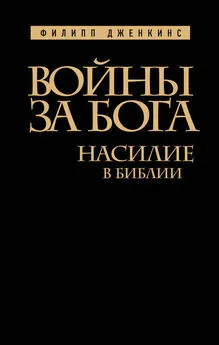

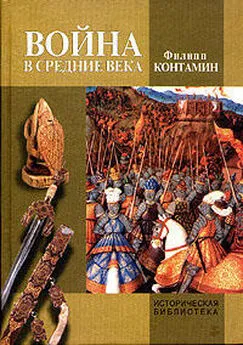


![Ясмина Реза - Бог войны [=Бог резни]](/books/610608/yasmina-reza-bog-vojny-bog-rezni.webp)

